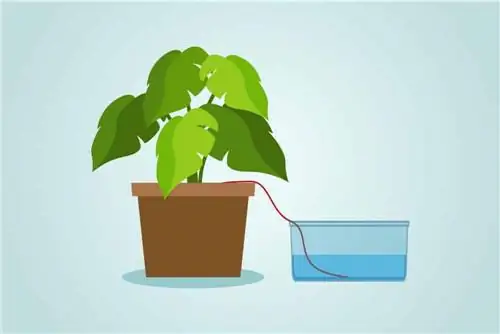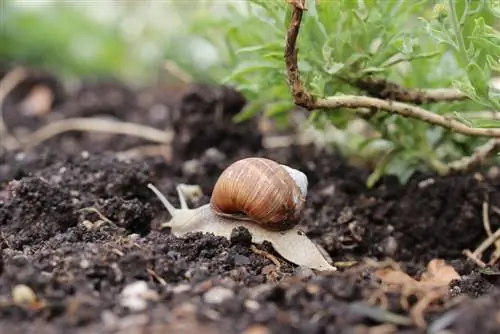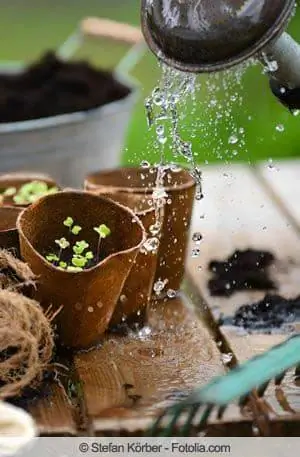- Author admin [email protected].
- Public 2023-12-17 03:39.
- Last modified 2025-01-24 12:45.
Watering is an essential part of gardening, but it often involves a lot of effort and time. However, this doesn't have to be the case, because hobby gardeners can rely on automatic irrigation. The practical thing here is that an irrigation system does not necessarily have to be expensive. Because with a little skill you can build an irrigation system yourself.
DIY watering system with bottles
One of the easiest and most cost-effective DIY watering systems works with conventional PET or glass bottles. These act as water storage containers and are inserted into the soil so that they gradually supply the plants with water. Depending on the water consumption of the plants, bottles of different sizes are recommended. To the delight of many hobby gardeners, the bottles can be used on the balcony as well as in the greenhouse or even outdoors. The only notable downside to this method is that the bottles are not necessarily decorative. However, if you have a green thumb, you can of course decorate the bottles and put them in the spotlight.
- suitable for: balcony, greenhouse, outdoor area
- Advantage: cost-effective
- Disadvantage: not so decorative
Instructions
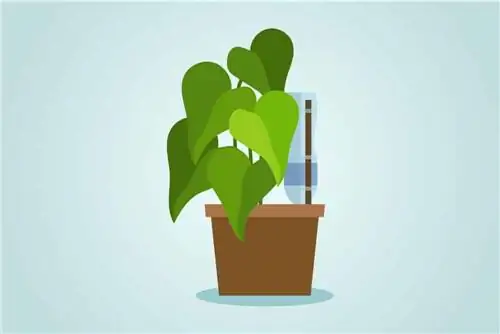
The DIY watering system with bottles is extremely simple and requires no manual skills. If you want, you can first remove the label from the bottle and remove any adhesive residue with nail polish remover. However, this step is not mandatory! The bottle is then converted into a water reservoir by drilling holes in the lid with a sharp object. Here, too, it is important to take the water requirements of the respective plants into account: the more holes there are in the lid, the more water can escape. The amount of water can also be varied and adjusted accordingly. After the container has been filled with water, it is best to proceed as follows:
- Put the lid on and close the bottle tightly
- Make a recess in the planter
- Place the bottle in the recess
- press firmly with soil
Note:
If you want to use the self-made irrigation system over a longer period of time, it is best to cut off the bottom of the bottle. This makes it easier to refill the containers with water. The bottom of the bottle is placed back on the bottle after filling and thus protects the irrigation water from insects and falling plant parts.
DIY irrigation with strings
Another very simple and inexpensive DIY irrigation brand is an irrigation system with cords. Here, the plant is connected to the water container using a thick wool cord. The advantage of this variant is that it is suitable for several pots. Basically, all you need is a water reservoir (larger container) and cords.
- suitable for: balcony, several plants
- Advantage: inexpensive, very simple
Instructions
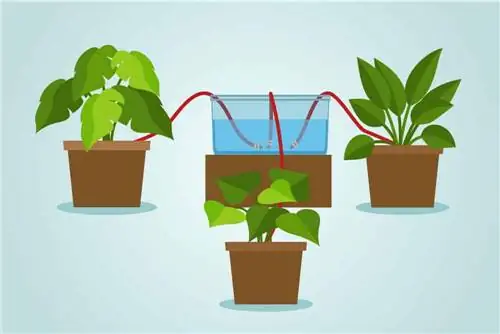
If you want to build this irrigation system yourself, you will first need a water storage tank. The size must be adapted to the water requirements of the respective plants, so that PET bottles can be used again for this purpose. The link between the plants and the water reservoir are thick wool cords. The individual components are then connected to each other as follows:
- Fill container with water
- put one end of the string into the water reservoir
- bury one end of the string near the roots
- about half the pot depth
“Bathtub principle”
The holiday season presents a challenge for many hobby gardeners because the plants want to be watered even when they are away. But there is also a simple solution for this, namely the so-called “bathtub principle”. Hobby gardeners take advantage of the size of a bathtub, prepare it accordingly and serve as a water reservoir for the plants. If you don't have a bathtub, you can alternatively use a paddling pool or a similarly sized container.
- suitable for: many small pots
- Advantage: practical on vacation, suitable for many small plants
- Disadvantage: Preparation is a little more time-consuming
Instructions
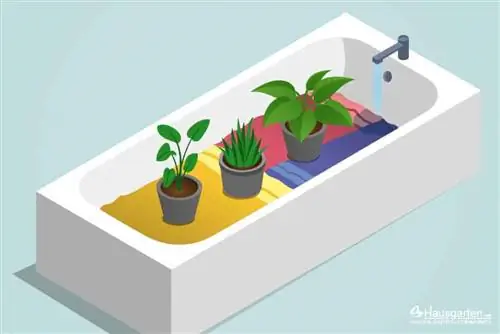
If you want to convert your bathtub into an irrigation system for potted plants for a few days, you first need absorbent material. Thick towels are suitable for this, but also perlite that is previously moistened. If you have the necessary materials, you can start building your own:
- Line the bathtub with thick towels
- Put pots in bathtub
- Let in water, about 5 cm deep
Continuous, automatic water supply
If you want to switch to an automatic water supply on the balcony not just on a daily basis but over a longer period of time, you can also build one yourself. In order for the plants to be permanently supplied with water, the water storage capacity must be correspondingly larger. You will also need garden hoses and an irrigation cone.
- suitable for: balcony
- Advantage: permanent, can work with rainwater
- Disadvantage: Greater space requirement, construction is somewhat more complex
Instructions

Building an automatic irrigation system for your balcony yourself is a little more complicated, but definitely feasible for hobby gardeners. First, the future location of the water storage tank must be determined. This should be installed as higher as possible than the plants, with a height difference of at least 50 to 100 centimeters recommended. The high tank is best mounted on the wall and filled with water. Alternatively, a rain barrel with a water connection can be used for this. The further procedure is now as follows:
- Connecting the garden hose
- Connecting hoses together
- every plant should have a hose
- Prepare irrigation cones according to instructions for use
- insert into substrate and connect hoses
Additional tips
Doing it yourself basically ensures that the plants are supplied with water, but there are still a few points that should be taken into account. In general, it is advisable to initially test the systems and observe them closely. This is the only way you can determine whether everything is working and the amount of water corresponds to the needs of the respective plants. The location of the plants is also crucial: in direct sun, the plants use more water. If the plants can cope with slightly less sunlight for a few days, it is advisable to adjust them accordingly. This not only reduces the water requirements of the plants, but also reduces evaporation in the water reservoir, which means the irrigation system lasts longer. In summary we can say:
- Test and observe the system extensively
- Adjust water quantity
- Do not place plants and homemade plants in the blazing sun

